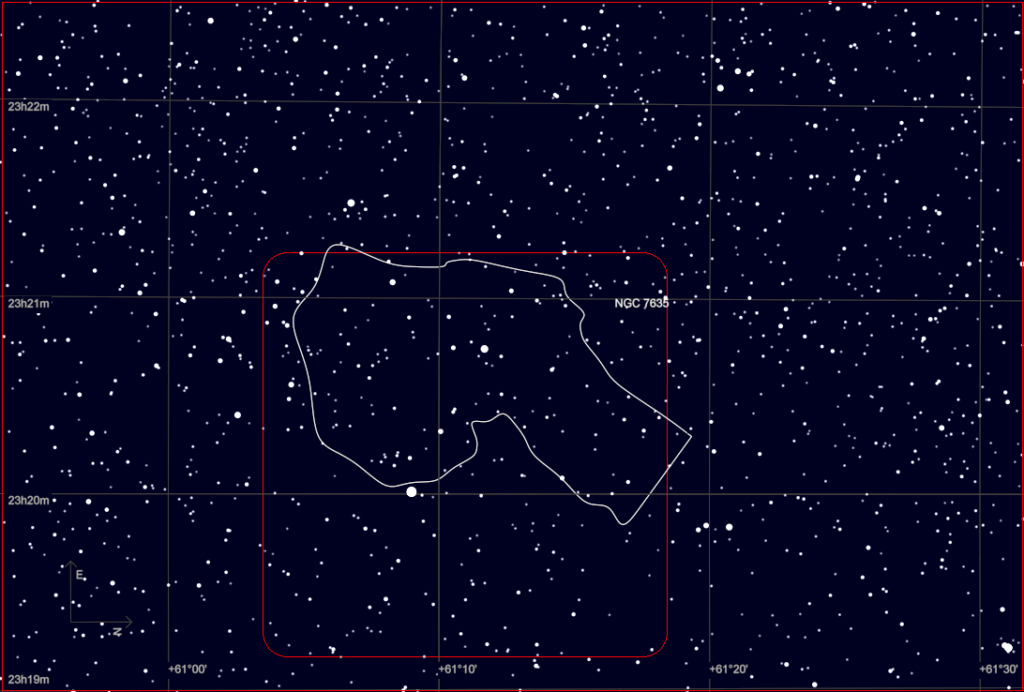Quite often, astronomers adopt a common name for a celestial object based on what it ‘looks’ like to them. Just as often it takes a very vivid imagination to see what the astronomer saw. Most of the common names were based on photography using fairly primitive cameras, equipment and techniques. Modern imagery taken with today’s CCD cameras and processed with computer software, look nothing like the common names associated with the celestial objects.
This is not one of those times.
This nebula quite obviously has a bubble blown in it. The star right of the bubble’s center and slightly above and right of the bright knot of gas is the guilty party. This young star has about 20 times the mass of the Sun and its energy output is several hundred thousand times that of our star. This is what is blowing the bubble in to the surrounding molecular cloud. The cloud of gas and dust is more dense on the right side of the bubble and thus is constraining the expansion more on that side.
The nebula is located in the constellation Cassiopeia and is about 7,100 LY from the solar system. It was discovered in 1787 by German born British astronomer William Herschel. The bubble is about 7 LY in diameter and is expanding at a rate of 25 km/s (54,000 mph). The temperature at the bubbles boundary is about 8180 K (14,264 °F).
![Bubble Nebula (NGC 7635)[Ha:76x35s]](https://ptobservatory.com/wp-content/uploads/2016/09/g_lvl_crv_dcv_ddp_NGC-7635-1024x690.png)
